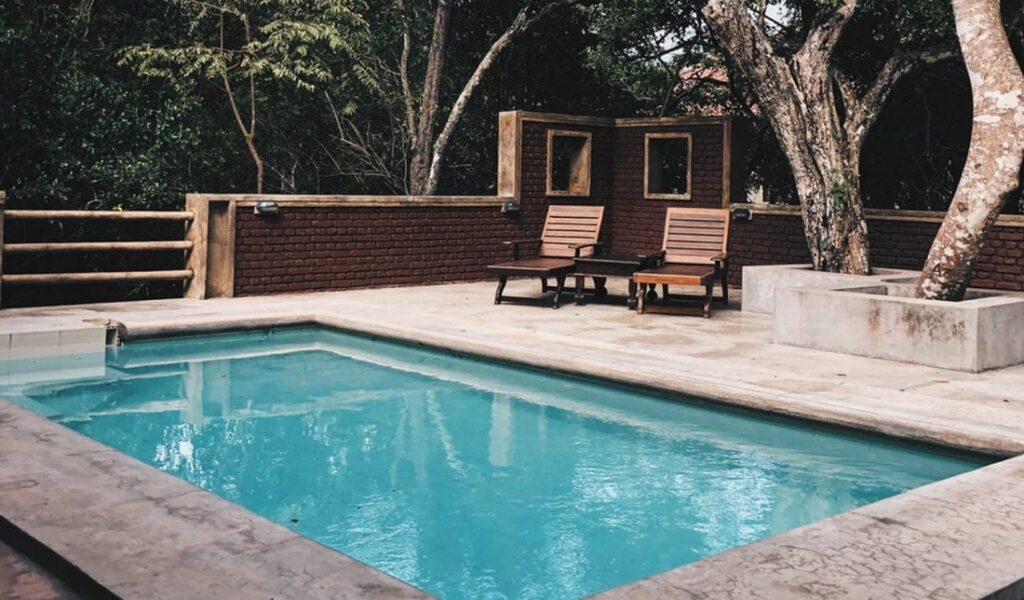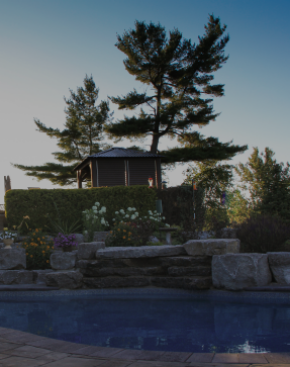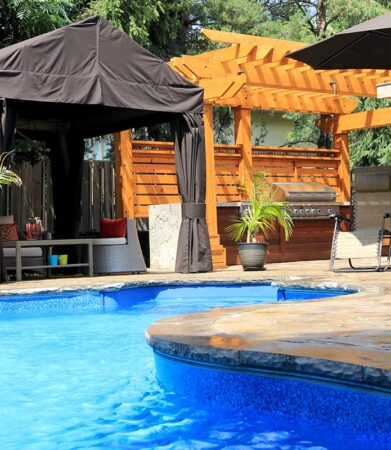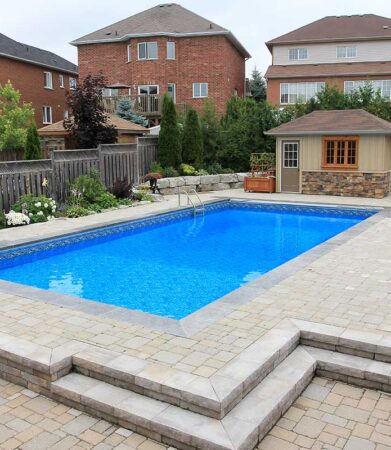
Keeping your the water well balanced is one of the most important parts of swimming pool maintenance. While the comfort and health of everyone who uses the pool may be the main reason for that, maintaining the right pH levels also helps keep the pool’s equipment in good working order. But when there’s a high pH level, it lowers chlorine’s ability to control contaminants, so knowing how to lower pH in pools is important.
3 Basic Steps to Lower the pH in Pools
Over time, adding chemicals to the pool can raise the pH levels in pools. That can cause an imbalance in alkalinity levels, make the water cloudy and/or trigger algae growth. Pool owners should test the pH levels in their pools regularly and use pH-reducing products to keep alkalinity levels balanced and enjoy their pool all season long. Here’s how:
- Test pH Levels – Use a water testing kit to measure pH levels and total alkalinity. To be properly balanced, pH levels should fall between 7.2 and 7.6 and total alkalinity must be within 80 ppm and 150 ppm. Low or high alkalinity or pH levels means you should raise or lower the pH levels in the water.
- Treat the Water to Re-Balance Levels – First, before treating the water, you should protect yourself with the right clothing, including safety glasses, long sleeves and pants, and rubber gloves. There are two basic treatments, dry acid, which is usually in powder form, and muriatic acid.
a. Dry Acid – Check the instructions and dosage recommendations on the product label. Spread the product on the pool’s surface at the deepest part of the pool. Make sure the pump and filter system is operating when you treat the water. Evenly spread the product by agitating the water with a pool brush. This will also dissolve clumps of the product.
b. Muriatic Acid – Again, use the instructions and dosage recommendations on the label. Check the label to find out if the product should be diluted before use. With the pool pump and filter in operation, pour the acid into the pool very slowly to minimize spills and splashes. - Test Levels Again After 2 Hours – After treatment, you should leave the pool pump running for at least two hours to circulate the chemicals. Test the pH and alkalinity levels again. If they still do not fall within the correct ranges, add more of the balancing product you used. But if everything is well-balanced, then you can jump in!
If you liked this post, check out our recent article on how to winterize your hot tub.




